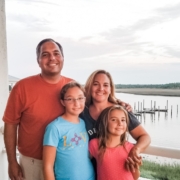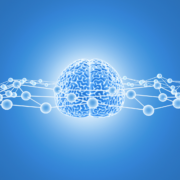What brain imaging can tell us about brain conditions
Attendees at the annual NAN Conference in Philadelphia last month were treated to a keynote speech from Marek Marsel Mesulam, MD, the Ruth Dunbar Davee Professor of Neuroscience and Founding Director Emeritus of the Mesulam Center for Cognitive Neurology and Alzheimer’s Disease at Northwestern University. Dr. Mesulam’s talk spotlighted what happens in the temporal pole, the very tip of the temporal lobe. Dr. Mesulam is a neurologist, and his textbook, Principles of Behavioral and Cognitive Neurology, has been part of training programs in neurology, psychiatry, neuropsychology and cognitive neuroscience. Dr. Mesulam’s current research focuses on the functional imaging of neurocognitive networks, the factors that promote memory preservation in advanced age, and treatment of dementia. After Dr. Mesulam’s talk at the NAN Conference, BrainWise Managing Editor Matt Villano caught up with him to ask him about the intersection between brain imaging and neuropsychology, and how 50 years of experience in the field has informed his perspectives today. Their chat was the latest in a series of interviews Dr. Mesulam has given on this subject (for another good one, click here). What follows is an edited transcript of the conversation.
BrainWise: You’ve been researching brains for more than 50 years. How has brain imaging evolved in that time?
Dr. Marek Marsel Mesulam: Until the 1970s, all we had were traditional X-Ray films of the skull. At that time, it was difficult to localize regions of the brain. If you had a patient and they showed certain deficits and you wanted to find out what part of the brain was causing that deficit, it was almost impossible. There were a few instances where arteriograms were done and that helped to find out which vessel was impacted. That might provide information about where a lesion might be, but that was it. It is important to realize that for the first 100 years of neuropsychology, the brain lesion correlation has been central to understanding brain function. Logic says that if you lose certain function and there’s a lesion in the brain, that was the part of the brain critical for that function.
There was revolution in imaging in the 1970s. We had the first CAT scan. Then we had the MRI, which was far more powerful. These are structural methods. They show you where a stroke is or where you have loss of substance. They helped establish an important distinction between stroke and the sudden death of a whole bunch of neurons in a specific part of brain, like where there is atrophy that could be the result of degenerative disease. Then we had another revolution in the structural/functional relationship. This first came in the form of PET scans where blood flow was scanned. Later we had single-photon emission computerized tomography (SPECT) scans. This allowed us to see where function was lost in the brain physiologically. For instance, when a part of the brain doesn’t work it doesn’t draw blood.
The last layer in the revolution has been to use PET scan and MRI to do something called functional imaging. In the initial paradigm, when you lose function, you look at part of brain that’s injured either by stroke or atrophy and you correlate the two. With functional imaging—with PET and MRI—we have the ability to ask the converse question or complimentary question: If you do a function, which part of the brain shows activation? That is a different paradigm.
By the time the 90s were over, we had all these tools in place. That means the past 20 years they have kept getting refined. Temporal resolution got better. Spatial resolution got better. Computational methods for analyzing data became better. Right now, we’re still reaping the benefits of these various technologies. The downside is that this is not something you just take off the shelf. You have to be pretty sophisticated in order to make sense of this. What I’m saying here is that images don’t come with labels. Interpretations can vary because the methods are so noisy. There is sometimes a lot of fantasy in interpreting results. By and large, compared to the 70s, where it was just a desert in terms of imaging, right now it’s really like being in a toy store. I think there will be continuous improvement.
BrainWise: From a research and clinical perspective, what do these new techniques offer?
Dr. Mesulam: They enable us to address impairment, for one. Where is the structural change in the brain? That gives you clues to identify the disease that is causing the problem. There are certain regenerative diseases that impair primarily the hippocampus. One other advantage, in addition to the scientific question of where in the brain is such-and-such a function, is to be able to understand what the underlying disease might be.
There are now dozens of different techniques. You can search for structural imaging of volume. Or structural imaging according to thickness. You can look at fibers. You can look at a resting state connectivity analysis. With PET scans alone, the options are multiplying. There are now metabolic PET scans, scans that show the number of synapses. We can also go in and look at amyloid distribution, tau distribution. Like I said earlier, there’s no such thing as ordering an image and getting an answer. The data provides information for a continuous hypothesis. As a doctor you start and try to make do with the least possible disruption and expense to the patient. If your initial imaging doesn’t give you an answer, then you keep getting deeper and deeper.
BrainWise: How does cognitive measurement assist imaging in getting a full picture of someone’s brain functioning?
Dr. Mesulam: People don’t come to you and say, ‘Doctor, I have atrophy in my frontal lobe.’ They come and say, ‘I have difficulty with x, y, and z.’ What people say and what really is there are two different things. People are not neuropsychologists. Many times, when we have patients coming in and saying, ‘My memory is not the way it should be,’ you have a have big differential. What do they mean by memory? Do they mean they can’t find words? Do they mean they can’t see faces from the past? Does it mean they can’t remember things from childhood? From yesterday? Does it mean they can’t hold someone’s phone number. Each one of these is a different kind of memory and each one of them has a different relationship to the brain. The job of neuropsychologist is to translate the lay language of patient into a language that can be correlated into what imaging shows. [For a systematic review of work on this subject, read this peer-reviewed article from the Archives of Clinical Neuropsychology.]
BrainWise: Looking forward, based on the decades of experience you have, how do you think artificial intelligence can help impact the way we read brain images?
Dr. Mesulam: Artificial intelligence (AI) is one of these totally ambiguous terms to me. Of course, we’re using artificial intelligence in interpreting images. We have powerful computers that are chewing out the data and comparing it to controls and giving us incredible and sophisticated information based on whatever thresholds we want. If one wants to call this artificial intelligence, they can suit themselves. To me the word is meaningless. We like to play with toys, and that’s what this is. If AI can find out the handedness of a patient, the developmental history, whether they had dyslexia in the past, that would be significant. If you assume that all the data in the world someday will be in some kind of computers, I suppose there eventually will be something slightly better, but right now it’s not as if we’re screaming out for some artificial thing doing something we can’t do.
BrainWise: So what does the future hold, Dr. Mesulam? How will better brain imaging make for better and more efficient neuropsychology?
Dr. Mesulam: We’ll get better inventions and statistics, better special resolution. We’ll invent new things that will show different chemicals in the brain. By 2028, I don’t think there will be much conceptual change. In 200 years, I don’t know. If we had a chance to introduce an electrode into each of the 40 billion neurons in the head, what questions would we ask? We don’t have a theory of brain function yet. Could we develop one? Data is a dime a dozen, and you need to interpret it to the best of your ability. We do our best and still even for the most seasoned clinicians there are surprises. Ultimately a clinician must believe the results of a clinical exam over imaging. That’s what the patient is experiencing. For people who take care of patients, at least as of now, that remains the primary source of data and therefore the primary part of the experience.
This essay has been factchecked by members of NAN’s Publications Committee. For more about that process, click here.









